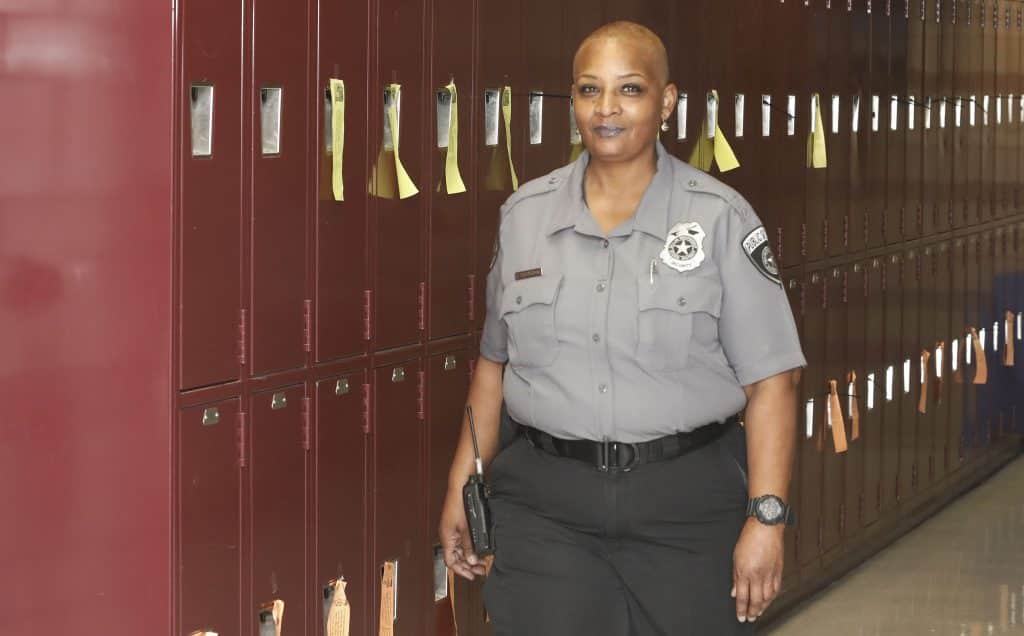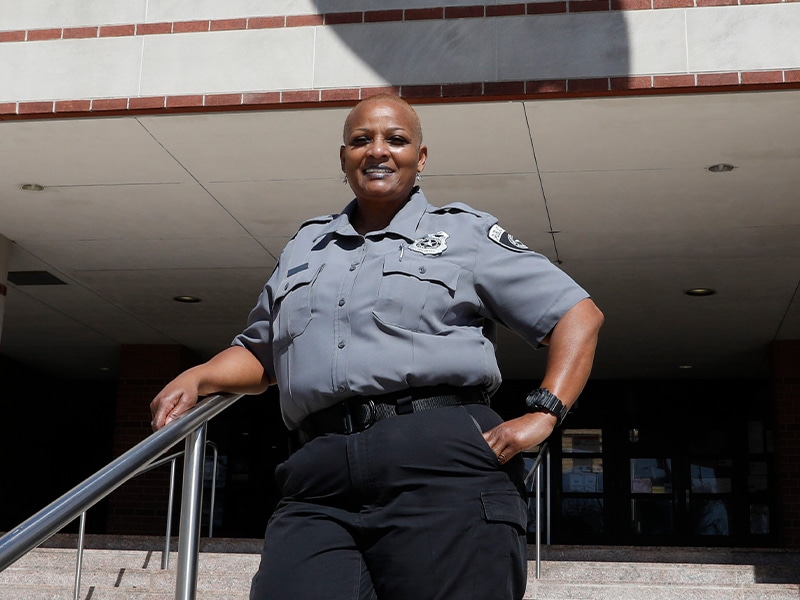Everyone experiences digestive discomfort from time to time. But in severe cases, it can be crippling.
Just ask longtime Dallas Independent School District security guard Sherita Cunningham. The 56-year-old was on vacation last summer when an intense pain in her upper abdomen brought her to her knees.
“I was literally crawling around to get everywhere I needed to go,” Sherita says. “Having children is one kind of pain. I don’t know if this is worse, but it’s in that class.”
It was this unbearable pain that led Sherita to seek help from Susannah Hambright, MD, general surgeon on the medical staff at Methodist Dallas Medical Center.
A sonogram revealed a gallstone had lodged itself in the neck of Sherita’s gallbladder.
Dr. Hambright told Sherita she would need surgery and recommended a robot-assisted procedure using Methodist Dallas’ da Vinci Robotic Surgical System.
“I’ve had surgeries,” Sherita says, “but I had never experienced anything like that. Robotic? I was like, ‘What is this all about?’”
 Sherita Cunningham has worked as a security guard for the Dallas school district for 27 years.
Sherita Cunningham has worked as a security guard for the Dallas school district for 27 years.
BETTER PRECISION, BETTER RESULTS
Sherita says she first knew something was wrong when a wave of pain hit after she finished eating dinner one night. When she began vomiting, she chalked it up to food poisoning.
“I thought maybe the pain would go away, but it was constant,” she says.
Sherita’s primary care physician prescribed her acetaminophen for pain and esomeprazole magnesium to reduce stomach acid, but nothing worked. Sherita had to resort to a liquid diet because she couldn’t keep solid food down.
“I lost about 12 pounds just like that,” she says. “This went on for about three weeks. Some days were better than others.”
By the time doctors discovered the gallstone and she found herself in Dr. Hambright’s office, Sherita’s abdomen was tender to the touch.
“We call her pain classic for gallbladder problems,” Dr. Hambright says. “It’s in the upper right quadrant and comes and goes in waves. It’s usually associated with nausea or bloating and is worsened by greasy or spicy meals.”
The stone was preventing Sherita’s gallbladder from emptying bile into the intestine to aid in digesting fat. The bile that accumulates in the gallbladder can become infected.
 Up to 15% of adults suffer from a disease of the gallbladder, a small organ that pumps bile into the intestines.
Up to 15% of adults suffer from a disease of the gallbladder, a small organ that pumps bile into the intestines.
Dr. Hambright explained to Sherita how the da Vinci robot, guided by her hands, would allow for a better outcome and ease her recovery.
It’s similar to laparoscopic surgery but with two big benefits: enhanced 3D imaging and micro-precision instruments that resemble a wrist and have a greater range of motion. The technology also leaves less scarring or adhesions that can lead to future problems, like hernias and bowel obstructions.
“It’s like a sneak peek into the abdomen without opening it wide up,” Dr. Hambright says. “It allows precise dissection with fewer instruments, which enables us to give patients minimally invasive surgery that gets them home that day and back to work in a few days.”
Some people assume the robot conducts the surgery, but that’s not how it works.
“The robot is doing what the surgeon is doing,” Dr. Hambright explains. “It’s not like there’s a button to press that says, ‘Take out the gallbladder.’”
A RETURN TO NORMAL
When Dr. Hambright performed surgery on Sherita, she discovered the gallbladder was so inflamed that it had become perforated and some of the tissue had died. She removed the gangrenous tissue and sent it for biopsy. Luckily, the results were benign, and no cancer was present.
Meanwhile, Sherita has happily returned to work and doing normal activities, including spending time with her grandkids. She credits Dr. Hambright and the surgical team for her recovery.
“The people were really nice and took care of everything I needed,” she says, “from the anesthesiologist and nurses to the procedure itself.”
 Sherita Cunningham is back on the job keeping the peace at Townview Center magnet school in Dallas.
Sherita Cunningham is back on the job keeping the peace at Townview Center magnet school in Dallas.
MORE ABOUT GALLBLADDER DISEASE
The gallbladder is a small organ that receives bile from the liver and squeezes it into the small intestine to help digest fats.
Diseases of the gallbladder are fairly common, afflicting up to 15% of American adults.
Women who are pregnant or have had multiple pregnancies are twice as likely to suffer gallstones as men of comparable age. This disparity evens out in older individuals as the frequency of gallstones increases with age.
In general, people who are more likely to get gallbladder disease include those who are female, pregnant, diabetic, obese, 40 or older, losing weight quickly, eating a high-fat diet, taking contraceptive pills, or undergoing hormone replacement therapy.

